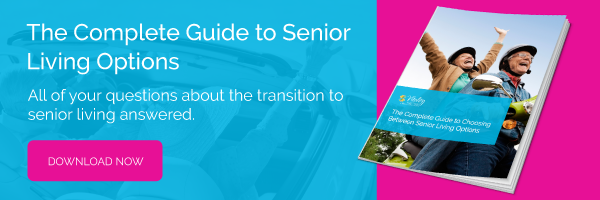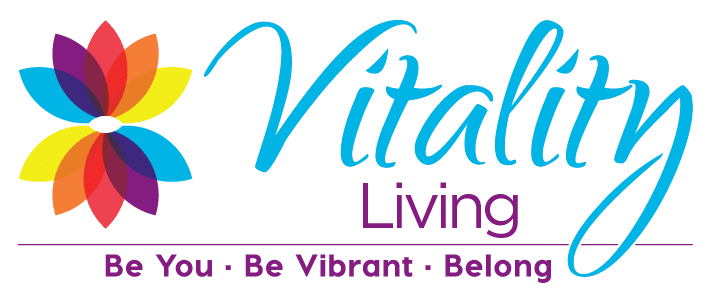There are many factors to consider when determining which senior living community is the best fit for a loved one. That means the process can take a little more time than many seniors and their families anticipate.
While a virtual tour via a community’s website is tempting, an in-person visit is a critical piece of the decision-making process. So, we put together this checklist to help you know what to look for and what to ask when you tour an assisted living community on a senior loved one’s behalf.
Assisted Living Personal Visit Checklist
Buildings and Grounds
Pay attention to the buildings and grounds from the minute you pull in to the community’s parking lot. Specifically look for:
- How well is the exterior maintained? Is it clean and well cared for? Are the grounds in good shape?
- Is visitor parking readily available? Is the parking area lighted and secure? This can be especially important if an older spouse will be visiting often.
- Are exterior doors secure and in good repair?
- Are common areas clean and odor-free?
- Are resident apartments and suites well maintained? Is there adequate space for their belongings?
Safety and Security
A safe, secure environment is also vital. Here are a few tips on what safety features and programs you should look for:
- Does the neighborhood surrounding the community appear to be safe and well-maintained?
- Are exterior doors kept locked at all times or during certain hours?
- Is there a receptionist or other staff member stationed in the lobby to greet families and to prevent uninvited persons from reaching resident areas?
- What type of emergency call system is used? How does a resident use it to call for help?
- Is there a fire suppression system in place throughout the community?
- Are fire extinguishers placed in easy to access locations?
- What emergency plan does the community have in case of fire, loss of power, flood, or other disaster?
- Are safety features in place in resident apartments and in common areas? Pay close attention to notice handrails in hallways, and grab bars at the bedside and in bathrooms.
Resident Care
While a beautifully appointed lobby can make the community appear more inviting, it’s the quality of care that matters most. Here are a few tips to help you determine how well residents are cared for when you are touring an assisted living community:
- Does each resident look tidy and well-cared for? Pay attention to their hair, face, and hands.
- Are residents dressed in apparel that is clean, as well as appropriate for the time of day and the season of the year?
- Do you notice staff interacting with residents in positive ways? Do they call each resident by name?
- Are life-enrichment activities taking place during your visit? Ask for a copy of the resident activity calendar and check to see what is scheduled for the day.
- Do staff members look you in the eye and say hello when you pass them on your tour?
Questions to Ask When You Tour an Assisted Living Community
It is also important to ask questions that help you gain more insight in to the community and determine its true commitment to senior care:
- What is the average length of service for staff members? A high turnover in caregivers can negatively impact the continuity of care each resident receives.
- How many residents is each caregiver responsible for? Does that number increase at night and on weekends? This ratio is often a determining factor in the quality of care at an assisted living community.
- How are caregivers screened prior to hiring?
- What type of training does each caregiver go through at the time of hire and throughout their employment?
- What does the monthly fee include and what additional expenses should you expect to be billed for each month?
- When your loved one needs more care, will they be required to move or can additional services be brought to them?
- What conditions would require a resident to move to a different type of senior living community?
Download a Copy of The Complete Guide to Choosing Between Senior Living
Because we understand how overwhelming it can be to plan for a transition to a senior living community, we created a step-by-step guide to help. The Complete Guide to Choosing Between Senior Living Options covers topics ranging from financial planning to discussing a move with your senior loved one. Download your free copy today!




